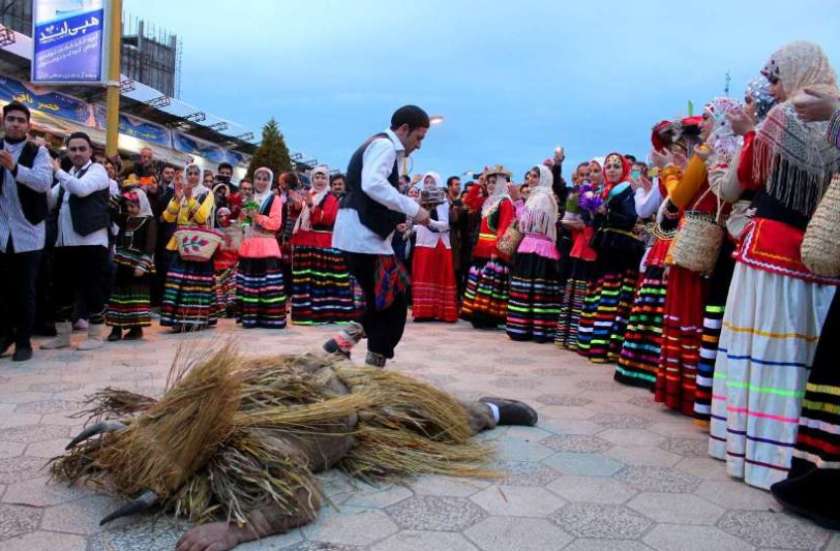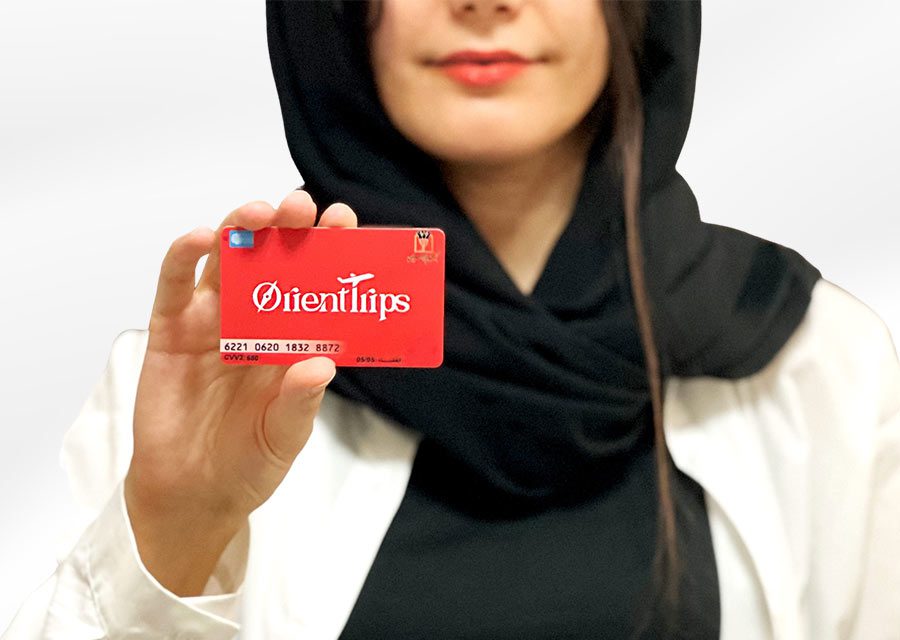The Bride of Flowers: A Gilani Spring Ceremony

In late March (early Farvardin, the first Persian month), the margin of gardens, meadows and roads in the province of Gilan is covered with a flower called Fili Flower (sci. Rhynchocorys elephas). The locals call this yellow and beautiful flower Aroos-e Gooli. Children pick this unique flower, shake it and sing a song in Gilaki accent.
They say; “Aroos-e Gooli! Ti pe-er nise! Ti me-ar nise! Yete beraghs!” It means “The flower bride! Your mother is not here! Your father is not here! Dance a little.
The Fili flower shrinks with the slightest breeze and makes children happy. The Fili flower is a symbol of the arrival of spring and a victory over the winter giant for Gilani children. That is what Gilani people have promised to themselves in a play called “Aroos-e Goli”.
Contents
Spring and all its flowers
When the Hyrcanian forests of Gilan are green and lush, everything is a sign of hope for something that everyone is waiting for. The old men display this expectation by performing a show about the arrival of the spring and beginning of the work.

Aroos-e Gooli – The Rite of Spring
People are eagerly awaiting the ceremony and members of the group are ready to perform. Men and women wear local clothes. The clothes are almost similar, except for Aroos-e Gooli whom her gown is more colorful and spring-like. Women put their colorful pins and spangles on her scarf to make her shine more and more. Aroos-e Gooli or Naz Khanoom in Persian, which means the bride’s flower, is a symbol of the spring and the beautiful nature in this season; therefore, they choose their dress from the variety of colors of this season.
In the past when the show was played spontaneously among the Gilani people, a man used to play the most important role of the play which was Aroos-e Gooli. He was wearing a local feminine dress, put a turban on his head, covered his face with a netted piece of cloth and carried an embroidery needle for defense. The time for the show was different in different villages. The show was mobile, and after the sunset, they chose an open field in the village and they performed the show for everyone. When the show was over, they used to go to people’s houses and took fruits, rice and money. Now this is rarely found anywhere in Gilan.
The Cultural Heritage Organization is the planner and in charge of the program, and presents every ceremony a pretext for performing it in order to remind people of such a heritage. They specify a specific location, date and time and place the viewer’s chairs and choose the show group.
When the preparation of Aroos-e Gooli is done, our eyes fall into a man who paints his face with a black charcoal. He is supposed to be the giant; the one who is stealing a bride and preventing the arrival of the spring. He wears a black dress and covers it with straw and sticks to make himself more fearsome.

Giant – Symbol of the winter
The giant is a symbol of the winter; the symbol of the end of the year in which there is no longer a place for, if the spring arrives. The winter giant is not ready to leave and the only way to stay is to steal the spring. Gilani people, who have long been a rice planter and fishermen, do not get along well with the winter and they believe that spring is the beginning of the blessings.
The old men chose a strong young man to perform this role and covered his face with black charcoal or black soot. He put on a paperboard hat and made him a thick black beard. They put the bells on his waist, legs and clothes. All of this was to make the face of the winter giant more horrible so that the bride’s colorful face would appear on the side.
The show group enters the scene. Women and men sit around the Aroos-e Gooli, and each one pretends to do something; one plants the other harvests. Everyone is busy planting the rice seeds until the giant which is dressed in black and in chips and thorns arrives. His arrival changes the atmosphere heavy and scares everyone. He is a giant and in the opinion of the people of Gilan, he is a legendary, strong with a big body who lives in caves and deserts. That is why they cover the actor of this role in black and disordered clothes.

Protect the bride and keep the spring safe
With the arrival of the giant on the scene, everyone is aware of his intention to steal the Aroos-e Gooli. They come straight to the front and fight with him with dance performances. The giant struggles with men at first and goes to the women after they fall asleep. Everyone wants to protect the bride and keep the spring safe.
So, women cling their skirts to their waist and go to the giant battle. But the giant is strong and nobody dares to fight him. So they collapse one after another and fall asleep. The last woman who goes to fight him will cover the Aroos-e Gooli with a cloth. The bride remains silent and immovable until her life is safe. When the giant sleeps everyone, she looks for the Aroos-e Gooli. He goes from one end of the scene to the other end and turns around, but he does not find the bride. Suddenly, another man, named Pir-e Baba (old father) wielding a wooden stick, comes to fight with him. He symbolizes one year of experience and knows better than anyone how to keep the bride safe.

In the old days, Pir-e Baba or Pir-e Baboo used to wear old clothes and a white beard made of goat’s skin or horsetail. Sometimes they used to cover his face in black like the giant and put a cardboard hat on his head and hang the bell from his clothes. In some of the shows, he had a cudgel to use for the bride’s protection. The battle of Pir-e Baba and the giant is the most important part of the play. The experience of one year of work must defeat the winter in order to see the spring again.
The giants and Pir-e Baba spin around each other and fight
Pir-e Baba tries to hit the giant with his stick but he cannot manage. He loses his stick and fights with his empty hands. They stick to each other and turn around. Once, Pir-e Baba is thrown off and once the giant falls. They are both experienced and strong. They join in tug of war. They grab each other’s shoulders and turn around. This is the time when the battle should be won; Pir-e Baba raises the giant on his hands and knocks him down. The giant is hurt and falls into the corner and does not resist. Pir-e Baba takes his stick out and slaps the giant so much so that he cannot breathe.

A Season in song and dance
When it is done with the giant, it is time to find Aroos-e Gooli. Pir-e Baba looks for Aroos-e Gooli with concern and runs to each corner of the scene, shouting her name. By hearing the sound of fife (kind of flute), Pir-e Baba looks around and sees the bride coming out of the cover with playing a fife. Now it is the time to start working. The spring bride, along with the experienced Pir-e Baba, runs to each individual and wakes them up. Everyone who wakes up does his job so that everyone will work together again. Here, the band is entering the scene and joins the other actors; one plays Dohol (a kind of drum) and someone else play Sorna (a kind of hornpipe). They all dance around the body of the giant and sing the local song of Aroos-e Gooli.
People can now work again and live with the spring bride. Aroos-e Gooli goes to each person and plays the fife for them to make them hopeful and eager for work. The battle with the winter is over and the spring has come; something that has been happening for centuries every year and has never changed. But the Gilani people are waiting for Pir-e Baba every year to take the winter down, and spring will come back desirably. They want to see Aroos-e Gooli again, in their gardens and grasslands in the early Farvardin (late march).
Read More






